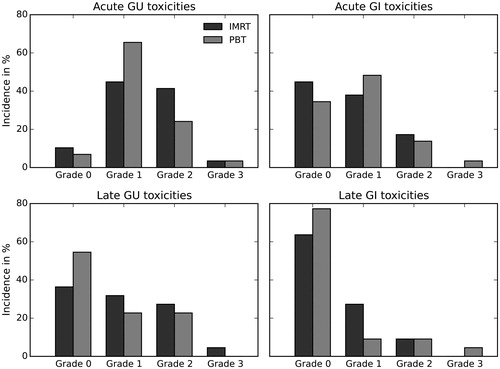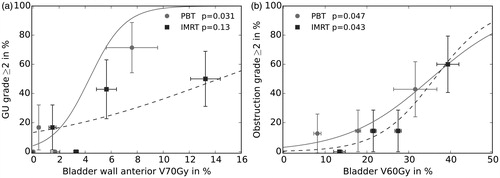Figures & data
Table 1. Clinical parameters of the patients included in the matched-pair analysis.
Figure 1. Overall genitourinary (GU) and gastrointestinal (GI) toxicities up to 3 months after radiotherapy (early) and at 12 months after RT (late). IMRT: intensity-modulated radiotherapy; PBT: proton beam therapy.

Table 2. Early and late (12 months after radiotherapy) genitourinary (GU) and gastrointestinal (GI) side effects according to CTCAE version 4.0.
Figure 2. Logistic regression models for late genitourinary (GU) symptoms grade ≥2 as a function of the relative volume of the anterior bladder wall receiving at least 70 Gy (a) and late obstruction grade ≥2 as a function of the relative volume of the bladder receiving at least 60 Gy (b) based on proton beam therapy (PBT, solid lines) and intensity-modulated radiotherapy (IMRT, dashed lines). Data points represent mean incidence rates and mean values of the corresponding dose–volume parameter of equally sized patient groups, standard deviations are visualized by bars.

Table 3. Logistic regression of late (12 months after radiotherapy) genitourinary symptoms and dose–volume parameters of the entire bladder wall and anterior bladder wall.
Table 4. Quality of life score differences for the EORTC QLQ-C30 and EORTC QLQ-PR25 questionnaires 3 months after RT vs baseline and 12 months after RT vs baseline for the IMRT and PBT group.
